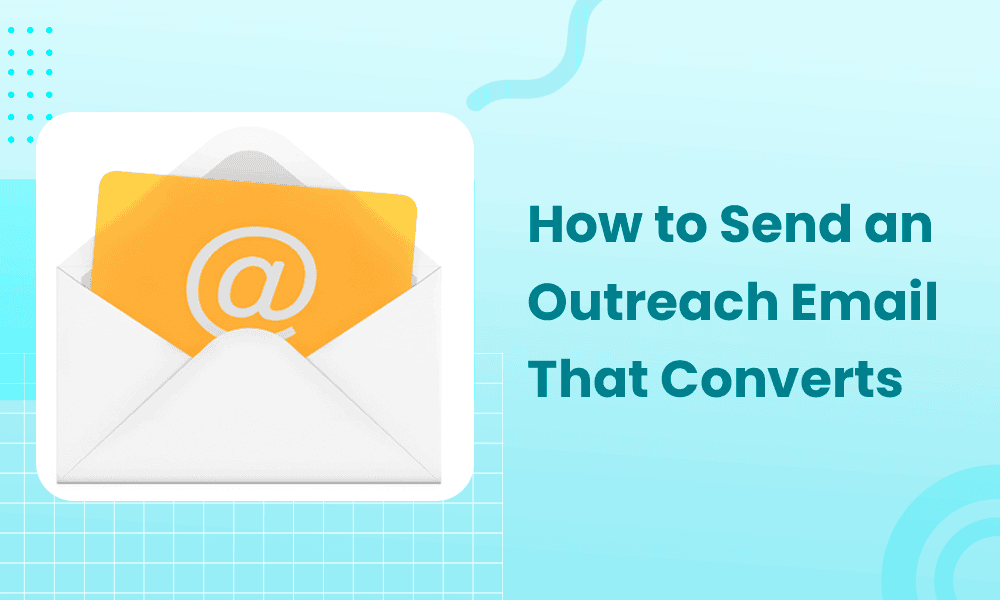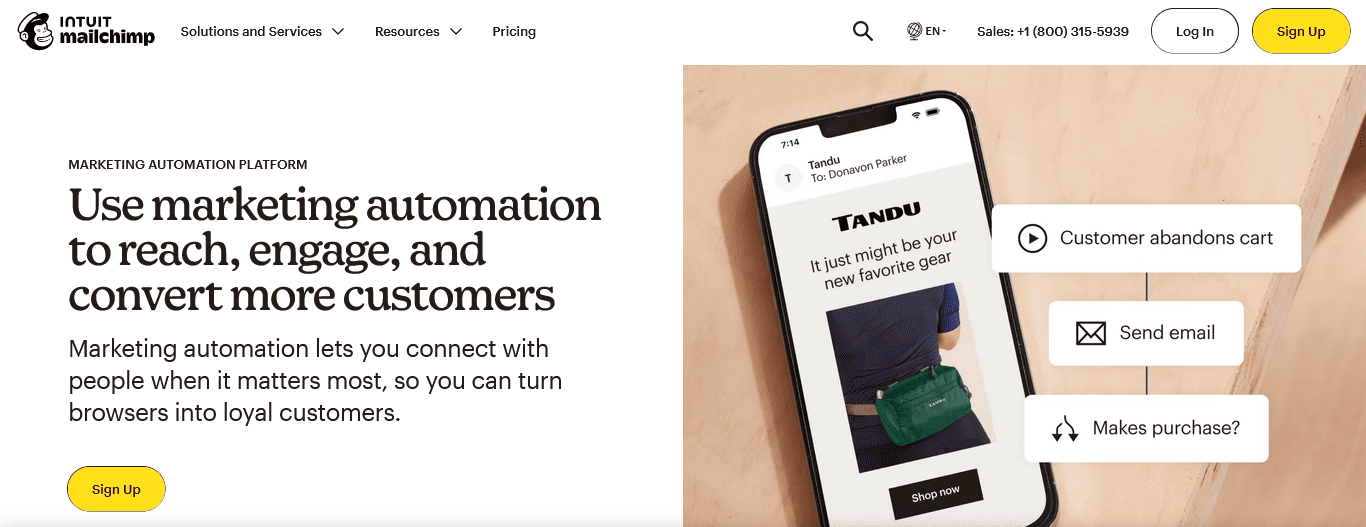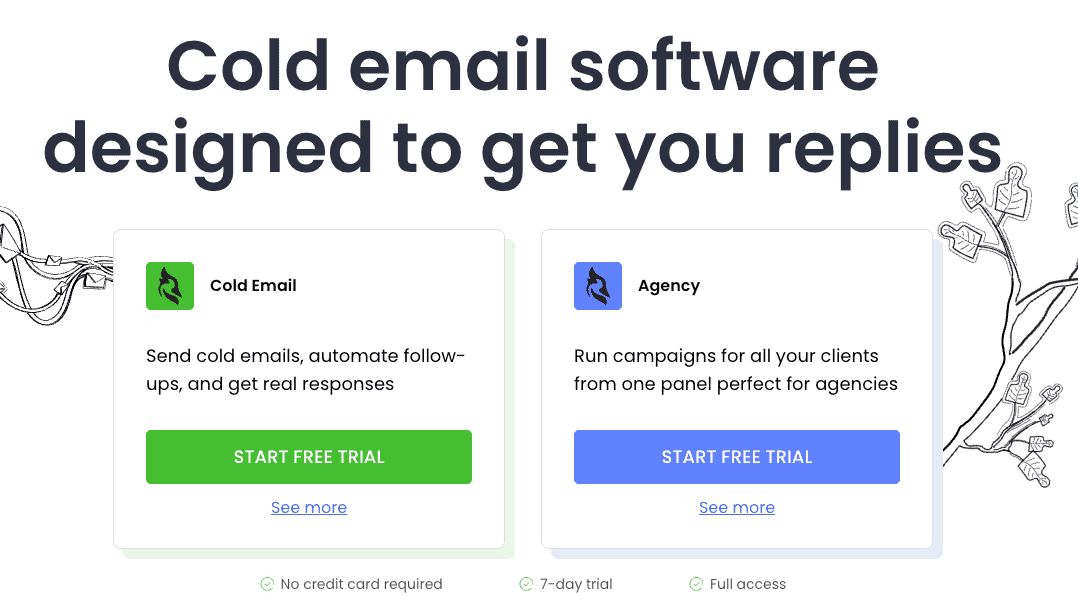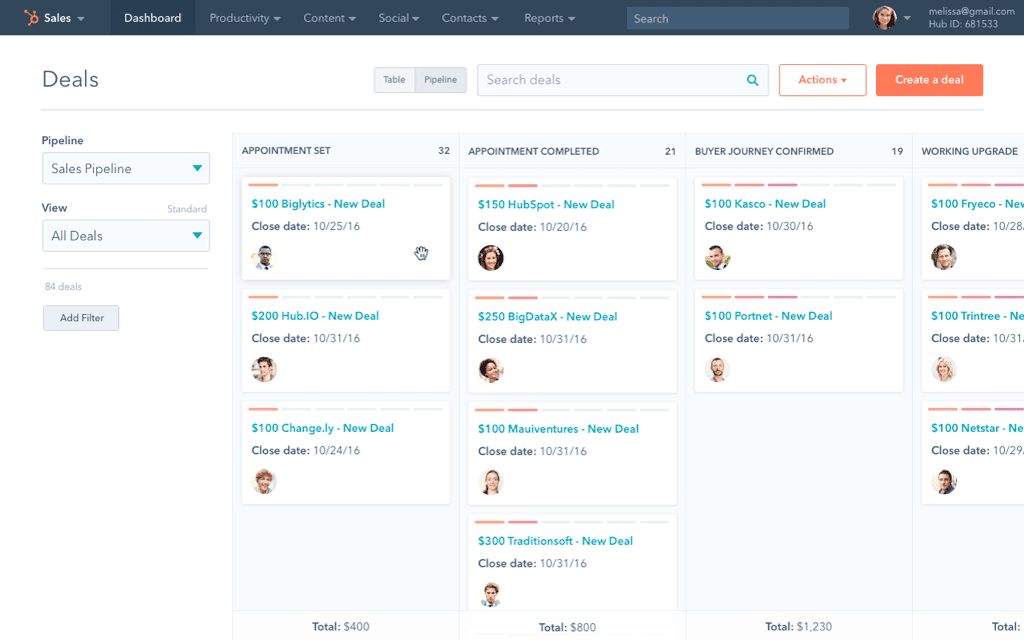Are your cold emails falling flat?
A captivating subject line is your golden ticket—the hook draws your recipient in, boosting your open rates and adding that personal touch that can make all the difference. Without it, you risk poor open rates, landing in spam folders, and damaging your email reputation.
Cold emailing is about connecting with potential customers, letting them know your product exists, and planting the seed for conversion.
It’s not a guaranteed success, but when done right, outreach emails can be a powerful tool to drive growth, increase revenue, and expand your reach—all with minimal investment.
Ready to refine your outreach email game?
In this blog post, we’ll explore key outreach email tips to help you launch successful campaigns and the best tools to aid you.
Let’s get started!
Table of Contents
Understanding Outreach Emails
Email outreach involves contacting websites or influential personalities via email to promote content, request backlinks, or build relationships. How do you effectively execute this?
Start by identifying profiles with strong authority and influence. These profiles, often with high domain authority, can provide a valuable platform for promoting your content. Once identified, the next step is to reach out through cold emails.
Personalization is key. Tailor your content specifically for your target recipient. When reaching out to personalities with more influence than your brand, your brand style and persuasive strategies become crucial.
Incorporate their names, brands, or special events into your outreach. Ensure the content aligns with your brand’s niche and the recipient’s interests. This approach positions you as a serious contender, boosting your chances of higher open rates.
However, it’s worth noting that outreach is often misunderstood and has earned a poor reputation for the wrong reasons.
Outreach emails are frequently labeled spam by receivers because many marketers need to implement a proper outreach email strategy. Instead, they send emails to as many individuals as possible, regardless of whether or not they will be interested.
And nothing can go more wrong than spamming your audience!
Email outreach isn’t spam. It’s all about carefully targeting those who could find your information beneficial. Then, share it and encourage people to take action if they like what they see.
Key Components That Make an Outreach Email Successful
Here are some key components that make an outreach email successful:
Subject line
A clear, concise, relevant subject line is crucial for grabbing attention. Personalizing the subject line by including the recipient’s name or company can boost open rates by 26%.
Subject lines with 10 characters have the highest open rate at 58%, while those with 50–59 characters see a 42% open rate. Aim for a subject line length of around 40 characters for optimal smartphone readability.
Personalization
According to ActiveTrail, 52% of customers are more likely to open emails if they are personalized.
Adding custom variables and icebreaker questions to your cold outreach campaigns can greatly improve open rates, reply rates, and overall conversions.
Call to action
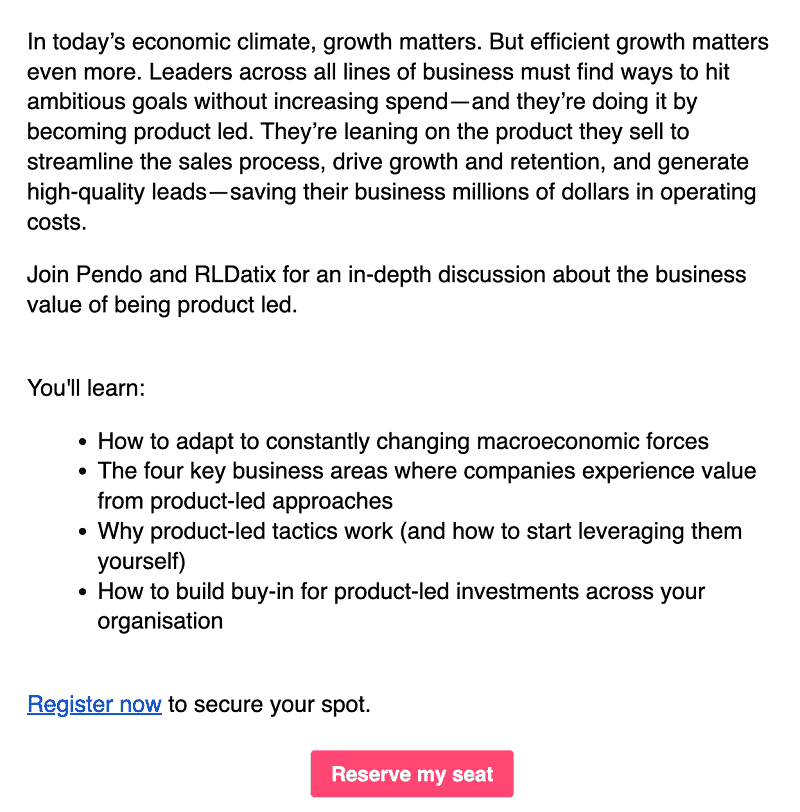
A well-crafted call to action (CTA) can significantly impact your outreach success. Use action-oriented words like “try,” “get,” “discover,” or “learn,” and keep it concise.
Focus on the reader’s benefit, create a sense of urgency, and use persuasive language.
Ensure your CTA button stands out with contrasting colors, appropriate size, and clear placement within your content. Repeating the CTA in longer emails can also reinforce the desired action.
Follow-up
Since most initial emails don’t always get a reply, following up with a second or third email is crucial to increasing your chances of getting a response.
Regarding email outreach, it’s important to follow the rule of sending no more than three follow-up emails and spacing them out by about a week to respect your recipient’s time and increase the likelihood of a reply.
Automation
Automating your sales outreach emails allows you to streamline customer communication and utilize key metrics, making your email outreach efforts more efficient and impactful.
By automating sales outreach, you can save valuable time and boost efficiency by automating tasks such as managing contact lists and sending tailored emails. This approach also helps you expand your reach and enhance customer engagement.
Formatting
Formatting your text effectively is one of the best ways to present yourself professionally when sending cold emails.
It also helps minimize miscommunication by organizing thoughts, action items, and other crucial points.
Read also: How to Make Your Email Marketing Campaigns Stand Out
How to Create an Outreach Email
Outreach email campaigns offer numerous benefits for your marketing efforts, such as brand enhancement, content promotion, link-building, and converting new leads. However, they require careful planning to be effective.
Here’s a step-by-step guide to crafting a compelling cold email that resonates with your recipients and drives them to take action.
Craft a compelling subject line
Craft a subject line that immediately grabs attention to ensure your email stands out in a crowded inbox. The key is to be concise, relevant, and intriguing.
A compelling subject line should pique curiosity, offer value, or create a sense of urgency, encouraging the recipient to click and explore further. Personalizing the subject line with the recipient’s name or a specific detail can also increase the chances of your email being opened.
Here are some tips for writing a compelling subject line for an outreach email:
- Be brief: Keep the subject line to 70 characters or less.
- Personalize: Use the recipient’s name or refer to their location or interests.
- Be relevant: Include keywords that your subscribers might search for.
- Create urgency: Use words like “Time’s Running Out” or “Starts Next Week.”
- Avoid spam: Don’t use spam words or triggers.
- Be clear: Set clear expectations and don’t mislead the reader.
- Be creative: Use numbers, emojis, or symbols.
Here are some examples of compelling subject lines:
- “Discover the secret to [desired outcome].”
- “Boost your [goal] with [offered solution].”
- “[Recipient’s Name], Quick Question About [Their Company/Project]”
- “Don’t Miss Out: [Event/Opportunity] Starts Next Week!”
- “Welcome to the crew!”
Before we move on, it’s crucial to remember that using too many spammy keywords in your subject line can trigger spam filters, sending your email straight to the junk folder.
Instead, focus on highlighting the unique aspects of your product or service, ensuring your subject line is both engaging and relevant without appearing overly promotional.
Ensure clear messaging in the body of your email
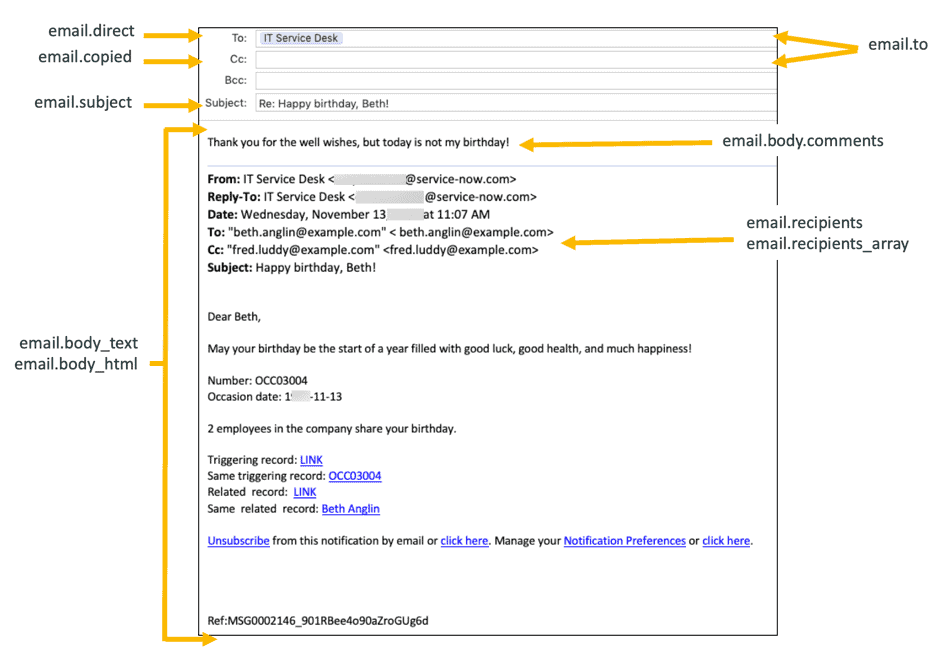
This is the next step in creating an outreach email program that delivers. So, the trick is to personalize your content for the individual recipients.
You may ask here – there are too many emails to send; how do I personalize them?
The answer is simple. Categorize. Then, prioritize.
Categorization involves segmenting your email list based on industry niche, operations, product/service type, and demographics. Afterward, personalize your emails through automation, such as automatically inserting the recipient’s name.
Create templates that an email automation tool can use to tailor content based on the data extracted from email addresses.
Adding a personal touch is essential when reaching out to influencers or websites with high authority. Mentioning their latest articles or recent achievements can show that you’ve done your research, which often leads to better engagement and results.
Additional tips for writing an effective outreach email:
- Create an exciting and straightforward subject line
- Do your research and get personal
- Give your targets clear value
- End with an eye-catching CTA
- Send follow-up emails, but don’t be annoying
- Focus on the benefits that your audience will receive
- Explain how your content or product can solve a problem or meet a need that they have
- Use persuasive language
Always aim to keep the body of your email concise and to the point. Consider using infographics or embedded videos to convey your message visually, reducing the need for lengthy text.
Additionally, include clear and compelling CTAs that prompt immediate action, such as clicking a button to visit your website or watching a YouTube video that provides further explanation.
Close your email, encouraging a response
Remember that these recipients could become your clients or partners. Writing informally to people who don’t know you or your brand can harm your campaign.
It’s best to take a polite approach when concluding your email. Use kind and respectful sign-offs that leave a positive impression and offer them a reason to connect or engage with you further. Here’s what you can do:
Here are some polite ways to sign off a cold email:
- “Eager to hear from you.”
- “Looking forward to your thoughts.”
- “Awaiting your feedback.”
- “Let’s connect soon.”
- “Hoping to hear back from you.”
- “Your response would be appreciated.”
- “Excited to discuss further.”
- “Looking forward to your reply.”
- “I’m here for any questions.”
- “Let’s make this happen.”
Read also: 100+ Thank You Email Subject Lines to Master Gratitude
Importance of Tone and Clarity in Outreach Emails
The tenor of your email creates the baseline of how the message will likely be received.
This should be business-like and, at the same time, friendly and courteous; clarity should always be a priority.
Let’s see what’s more about tone and clarity:
- Politeness is very important since it paves the way for friendship. It brings the direct interaction of a talk and makes your email seem like you are in a discussion, which is responding well.
- Simple and easy to read means you convey your purpose well, and nothing gets lost in translation.
- Cognitive communication minimizes the likelihood of negative responses or perceived hostility.
- Uniformity is preferable so that it resonates with your brand identity and builds credibility.
- A tone that is not overly submissive or overly assertive and that follows guidelines effectively influences the intended behavior of the recipients, hence increasing their engagement.
- Always be sure to do a spell check and link check.
- Utilize templates for this representation, but ensure you have personalized content for each recipient.
- Monitor the response rates and modify content and contact lists based on identified patterns.
- Remind the person if you still expect a reply after a reasonable break, but do not pester them.
Email outreach isn’t just about sending cold emails—it’s about building rapport and sharing content that truly benefits the recipient. It’s also about sparking a conversation with potential clients or partners.
By following these guidelines and focusing on creating value, you’ll see your open rates increase and unlock your business’s full potential for email outreach.
Read also: 12 Examples of Email Marketing Strategies That Work
Tools and Technologies for Email Outreach
The right tool can make all the difference. But how do you know which ones to choose?
Let’s see what tools are out there to help you streamline your outreach campaign.
Automation tools
The right tool can transform your outreach efforts. But with so many options, how do you know which ones to choose? Let’s dive into some of the best tools available to help you streamline and optimize your outreach campaign.
MailChimp
Mailchimp has been a leading name in email automation for over two decades, and for good reason. This tool offers a comprehensive suite of features that simplify campaign management.
Its Customer Journey Builder allows you to tailor content based on past campaign performance, ensuring your messages are relevant and engaging.
Additionally, Mailchimp provides pre-designed templates and solutions, saving you valuable time and enabling you to create content in just minutes. You can also use Mailchimp to design landing pages, forms, and other digital assets to support your CTAs, making it a versatile tool for any outreach campaign.
How much does it cost?
Pricing ranges from Free ($0/month) to $137.66/month.
Visit MailChimp
Lemlist
Lemlist distinguishes itself in the crowded market of email automation tools with its centralized platform, designed to address all your outreach email needs.
From scheduling cold emails to crafting effective messages using AI, Lemlist keeps you ahead of the curve by offering everything in one place.
What sets Lemlist apart is its robust sales automation features, which can significantly amplify the impact of your cold emails—all through a single investment. Lemlist lets you set up multichannel outbound sequences when ready, making email automation seamless and efficient.
How much does it cost?
Starting at $59/seat/month.
Visit Lemlist
Woodpecker
Woodpecker is a top-tier automated outreach email service that shines with its Email Warmup feature, helping you build a strong sender reputation and keeping your cold emails out of spam folders—a game-changing function for any marketer.
Although Woodpecker currently doesn’t support Google accounts, improvements are anticipated soon. One of its standout features is its ability to check your email list, preventing messages from being sent to spam accounts.
Additionally, Woodpecker lets you create personalized follow-up sequences that automatically adapt based on your prospects’ actions. By default, it waits three days after the initial email in your sequence, but you can adjust the timing to fit your outreach strategy.
How much does it cost?
Cold email service starting at $54/user/month.
Visit Woodpecker
CRM software
Managing an effective outreach email program involves juggling multiple clients simultaneously. Tasks like responding to replies, sending reminders, and addressing queries are all part of the marketer’s daily routine.
To handle these efficiently, the right Customer Relationship Management (CRM) software can be a game-changer.
Here are some top CRM tools that can streamline your outreach efforts:
EngageBay
EngageBay is an all-in-one customer relationship management tool designed to streamline your outreach email campaigns and improve customer interactions.
With EngageBay, you can automate your email marketing efforts, manage contacts, and track leads in one platform.
The automation features allow you to create personalized email sequences, trigger campaigns based on user behavior, and segment your audience for more targeted communication. EngageBay also integrates with various tools, making it easy to manage your outreach campaigns, track performance, and collaborate with your sales and marketing teams.
By leveraging EngageBay CRM, you can enhance your email outreach strategies, increase efficiency, and drive better results for your business.
How much does it cost?
EngageBay CRM is completely free to use. Paid plans start at $11.04/month.
Visit EngageBay
HubSpot
HubSpot is widely recognized for its CRM tools, but its email automation capabilities within the Marketing Hub are equally impressive.
With HubSpot, you can route leads, segment contacts, create dynamic lists, and set up internal notifications, significantly improving collaboration between your marketing and sales teams.
Additionally, HubSpot Workflows allow you to create customized automated email sequences triggered by specific actions, ensuring that your outreach efforts are timely and relevant. These features make HubSpot a powerful tool for streamlining and optimizing email marketing campaigns.
How much does it cost?
Up to $3,600/month for large corporations.
Visit HubSpot
Zoho Campaigns
Zoho Campaigns, an email marketing software from Zoho, integrates seamlessly with Zoho CRM, providing a cohesive platform for managing your email outreach and customer relationships.
When a contact interacts with your emails or takes specific actions, that information is automatically synced back into Zoho CRM, ensuring your sales and marketing teams stay aligned.
To kickstart your email automation, you can utilize one of the pre-made process templates available on Zoho Campaigns, making it easier to set up and manage your campaigns effectively.
How much does it cost?
Up to $5.37/month for professionals.
Visit Zoho Campaign
Analytics tools
Evaluating and analyzing every outreach email campaign is crucial to understanding its effectiveness and identifying areas for improvement. Tools like Google Analytics and HubSpot Analytics are invaluable for marketers seeking accurate metrics and actionable insights.
These tools allow you to monitor click-through rates, track conversion rates, and assess how recipients interact with your emails.
With these metrics, you can fine-tune your content strategy and optimize future campaigns for better performance.
Read also: 8 Free Email Trackers You Didn’t Know Existed
How to Track Outreach Email Marketing Performance
While many standalone email monitoring solutions are available, most CRM systems now have in-app email tracking features.
Email tracking can be as straightforward as embedding a pixel tag, an invisible element within the email that notifies the sender when the recipient opens it.
As technology advances, email tracking tools evolve, offering more sophisticated methods to monitor key performance indicators (KPIs), enabling businesses to gain deeper insights into email engagement and optimize their outreach efforts.
Here are some tips for using analytics tools to track email performance and recipient engagement:
- Track open rates: In the next steps, understand what kind of subject lines most interest the audience.
- Track bounce and unsubscribe rates: To assist you in honing down your email list and exclude those who are inactive or are not interested in your newsletters.
- Track time and frequency of email interactions: This will help you discover when people opened their emails, how they interact with them, and whether more frequent emails are desired.
- Track click-through rate: This determines the number of people who clicked a specific link in a given email or on a website page.
- Track email response time: This is useful in business-to-business and business-to-consumer transactions conducted electronically through emails. It defines the time a recipient takes to reply to a particular email.
- Segment your audience: Depending on the email, the time at which it will be sent, the day of the week, geographical position, and the demographic data of the client.
- Create trackable links: With UTM parameters when tracking the clicks in Google Analytics for the individual email.
- Embed tracking pixels or unique URLs: This means that you monitor not only measurements but also interactions like opens, clicks, and forwards within your emails.
Common Mistakes to Avoid in Email Outreach
Here are some frequent pitfalls in email outreach and how to avoid them:
- Not personalizing your emails: Due to the warmup, individuals are likelier to open and read deliverability-driven emails. In email marketing, one can use the names and titles of the recipients to make the particular email unique. You may also include the recipient’s interests or even the needs of the individual in the same email.
- Not segmenting your email list: Email list division means you can easily and effectively send messages to your subscribers through proper targeting. One type of list segmentation is generic based on age, location, gender, occupation, etc.
- Sending too many emails: Honest and adequate email communications do not make subscribers feel inundated and unsubscribe. But remember, it’s best to avoid frequent contact and aim to send at most one email per week safely.
- Not including a call to action: Every message you send, be it to clients, colleagues, friends, or the general public, should include a call to action, such as visiting our website, joining our mailing list, or buying now.
- Do not proofread your emails. Also, write an email and carefully review it to see if there are concise mistakes such as spelling or grammatical errors.
Read also: The Best Time To Send an Email (and the Worst)
What Does a Poor Outreach Email Look Like?
Here are some examples of poor outreach emails and suggestions for improvement:
- Overly enthusiastic: It’s popular and eye-catching, but often people become irritated when companies overuse words like ‘amazing’ or ‘incredible.’
- Unprofessional tone: This includes typing lengthy messages, using informal language, overusing specific terms or abbreviations, and not editing for misspelled or grammatical mistakes.
- Bad subject line: A weak subject line can easily lead to the recipient ignoring the email message or deleting the email without even opening the email message.
- Asking for something inappropriate: For example, a link to an article on marketing placed on the website of a retailer that sells children’s toys cannot be helpful.
- Sending to the wrong recipients: A type of mistake can be made by placing multiple recipient’s emails in the “To” field or sending an email to the wrong recipient.
Read also: 5+ Best Follow Up Email Examples You Need To Know
Follow-up Emails and Maintaining Professionalism
Follow-up emails are essential for nurturing business and career-related relationships. They serve as polite reminders, encourage progress, and demonstrate your dedication and professionalism.
When crafting a follow-up email, setting the right tone is important. Start with a friendly greeting, ideally using the recipient’s name, and express gratitude for any previous interactions or assistance. This helps establish a positive tone and sets the stage for the rest of the email.
Briefly reference the previous conversation or email exchange to provide context and jog the recipient’s memory. This ensures that your follow-up is relevant and linked to your earlier communication.
Clearly state the purpose of your follow-up email and what you hope to achieve. Whether you’re requesting a meeting, seeking feedback, or providing additional information, being specific in your request helps the recipient understand your expectations and respond accordingly.
To increase the chances of getting a response, use a creative subject line, maintain a courteous tone, and align your expectations with the recipient’s role and capabilities. This approach encourages timely responses and reinforces your commitment to maintaining a professional relationship.
Read also: 20 Marketing Automation Workflows for Amazing Results
Conclusion
Strategizing a full-scale outreach campaign can yield impressive results when executed correctly.
Whether targeting influential profiles for advertising or targeting conversions, outreach emails are your go-to solution. Crafting compelling subject lines, personalizing email content, and incorporating infographics and videos can significantly enhance your open rates.
By leveraging tools like Mailchimp, EngageBay, or HubSpot to automate your process, you’ll be on the fast track to a streamlined and successful email outreach program.
EngageBay is an all-in-one marketing, sales, and customer support software for small businesses, startups, and solopreneurs. You get email marketing, marketing automation, landing page and email templates, segmentation and personalization, sales pipelines, live chat, and more.
Sign up for free with EngageBay or book a demo with our experts.
Frequently Asked Questions (FAQs)
1. What is the best time to send an outreach email?
According to a 2023 Belkins study, the ideal time to send cold outreach emails is between 12 and 4 p.m., when open rates average approximately 41%. However, reply rates are highest in the morning, between 7 and 11 a.m.
2. How often should I follow up on an outreach email?
There’s no preset rule, but ideally, you should send out follow-ups four to nine times at a considerable interval. Do not exceed the limit or increase the frequency; you may get tagged as spam.
3. How do I measure the success of my outreach email campaigns?
Evaluating the open rate, list growth rate, bounce rate, conversion rate, churn rate, and click-through rate and validating the email list could give you a pretty fair idea of how good your sales outreach email campaign is.
4. Can automation help send outreach emails, and if so, how?
Yes, automation can make sending outreach emails possible in the following ways: It can send specially orientated outreach emails at a particular time, saving time and gradually increasing the frequency of the emails sent out.
